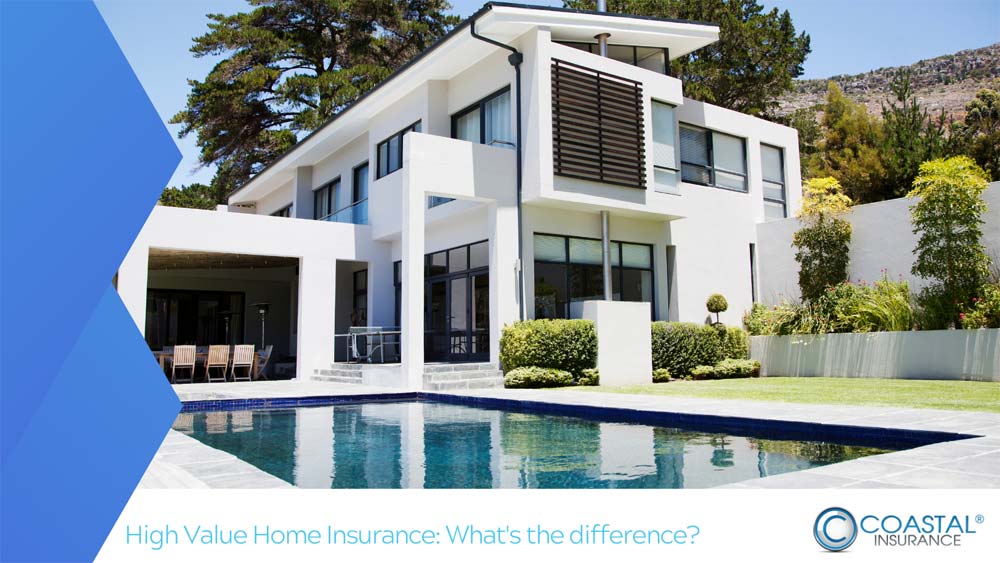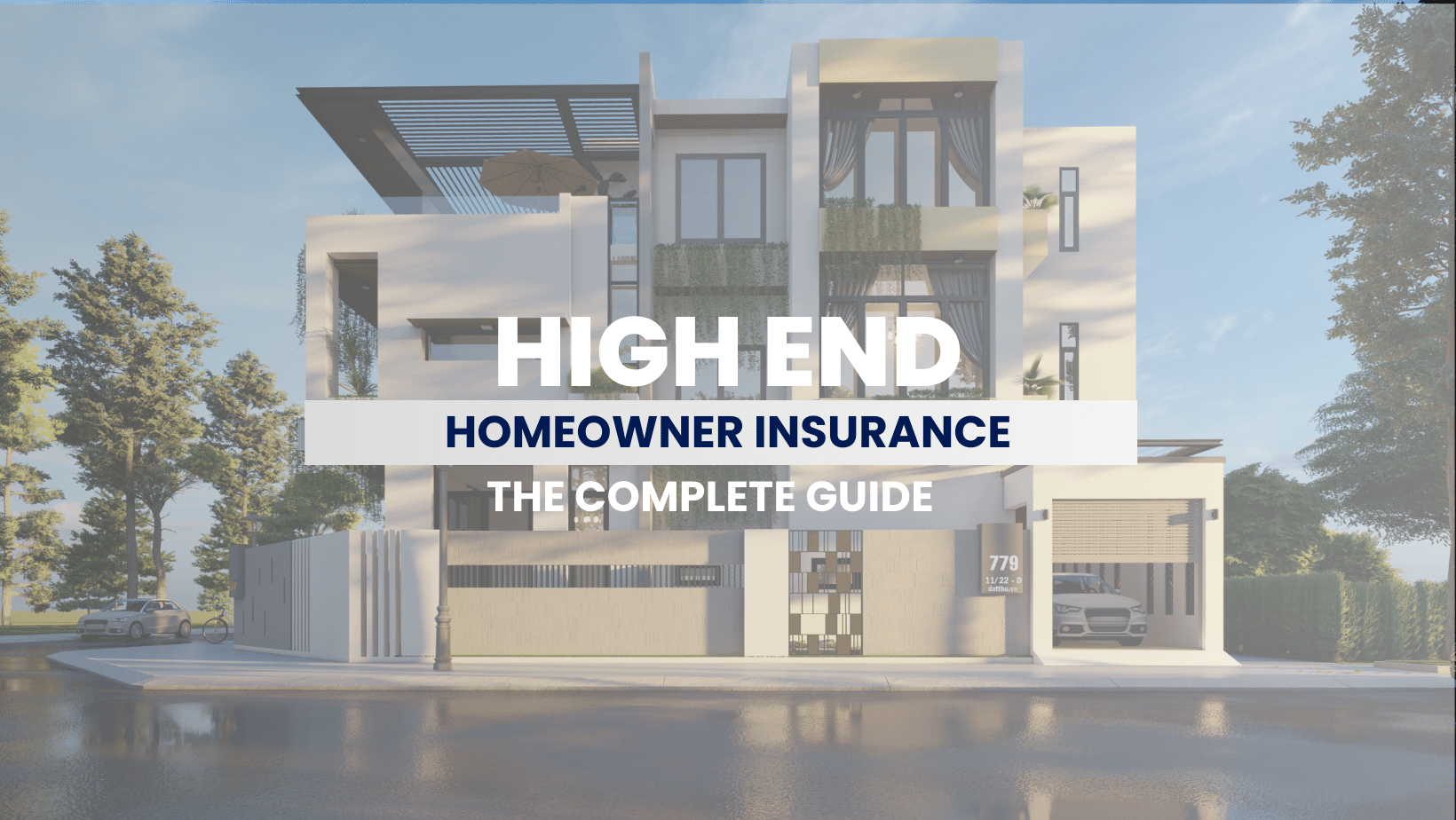
For homes with a rebuild value of $1 million or more, you can choose a high-value home insurance policy instead of standard home insurance. The choice of a high-value home policy brings many compelling advantages, ranging from broader liability insurance coverage to cash settlement options that pay you the full insured value of your home after a total loss. While some homeowners are unaware that such a choice exists, many others are unclear about what sets a high-value home insurance policy apart.
Here’s what you’ll need to know before making a choice.
Is a high-value home insurance policy worth it?
A high-value home insurance policy offers more options and features and more flexible policy language when compared to a standard home insurance policy. But a high-value policy doesn’t have to cost more and delivers more value through its extra features.
Because a high-value home insurance policy offers more ways to customize, you can tailor your policy to meet your unique needs. This structure means you can adjust coverage levels to invest your premiums where you need the most protection.
In addition, a high-value policy can save you thousands in certain claim situations through special features like a deductible waiver for claims above $50,000.
Here are 5 key differences that set a high-value home insurance policy apart.
- Guaranteed replacement cost
- Cash settlement option
- Deductible waiver
- Broader liability coverage
- Flexible coverage limits
1.Guaranteed replacement cost
One advantage a high-value home insurance policy offers is guaranteed replacement cost for dwelling coverage. With guaranteed replacement cost, your policy can pay the total rebuild cost of your home even if the cost of rebuilding exceeds your coverage limit.
In recent years, the price of lumber increased dramatically. Increases in the cost of materials don’t always happen gradually. A supply chain disruption or a wide-reaching weather event can pressure inventory, causing material costs to skyrocket. Similarly, the cost of labor can also change suddenly, affecting the cost of rebuilding or repairing homes and leaving many homeowners underinsured.
With guaranteed replacement cost coverage, your dwelling coverage can expand to protect you from changes in the cost of materials or labor, ensuring you can restore your home to its original beauty.
By contrast, a standard home insurance policy doesn’t offer this option. Suppose a covered loss leads to damage that exceeds the dwelling coverage limit. With a standard home insurance policy, the homeowner has to pay the difference.
Guaranteed replacement cost coverage offers a powerful way to insure against unexpected losses coupled with higher-than-expected rebuilding costs.
2.Cash settlement option
Both a standard home insurance policy and a high-value home insurance policy provide coverage to rebuild your home after a loss. However, only a high-value home insurance policy offers a cash settlement option that can pay you (cash) for the total insured value of your home.
The difference in claim payout comes from the formula each policy type uses to pay claims.
A standard home insurance policy pays on an actual cash value basis until the repairs are completed. This structure means that the insurer pays the claim in two stages, with the first payment meant to get started on repairs or act as a cash settlement and the second being a payment for completed work.
Actual cash value uses a depreciated value for your home that can deduct up to 50% of the value of your home based on age.
For example, if your home has a $3 million rebuild value, a standard home insurance policy may pay only half that amount ($1.5 million) as a cash settlement. This amount represents the actual cash value for your home. After repairs are completed, the insurer pays the balance of the claim.
But what if you want to rebuild somewhere else? Or, maybe you’re not ready to rebuild right away. With a standard home insurance policy, you may have to rebuild in the same location. If you choose to rebuild somewhere else, you’ll have less money to do so because the policy pays a depreciated value unless you complete repairs at the original location.
By comparison, a high-value home insurance policy offers you the option of a full cash payout, giving you the freedom to rebuild elsewhere or at another time. For the same home with a $3 million insured value, a high-value policy offers a complete payout of the $3 million insured value.
With a high-value home insurance policy, your coverage works the way you’d expect, fully covering your insured loss without a need to rebuild.
3.Deductible waiver
The deductible is the part of the claim you pay, and many homeowners use their deductible as an effective way to manage premiums. By choosing a higher deductible, you can expect lower premiums. This strategy allows you to self-insure against smaller losses or partially self-insure mid-sized losses.
But if you have a larger loss, the deductible can be an unwelcome expense at a time when your home is in disrepair and while you are working with adjusters or contractors.
A high-value home insurance policy offers a unique feature that waives your deductible for losses above a certain amount. Most commonly, high-value insurers offer deductible waivers for covered losses of $50,000 or more.
For example, if you choose a $10,000 deductible, you’ll pay for losses below that amount. If a windstorm causes minor damage that costs $6,000 to repair, that becomes an out-of-pocket expense. In exchange, you’ll enjoy lower premiums because you’ve accepted the risk for smaller losses.
However, if you have a more significant loss of $50,000 or more, your high-value policy can provide full coverage without taking a deduction for the $10,000 deductible. This structure offers lower premiums based on your deductible while still offering full protection for more significant claims.
4.Broader liability coverage
Both a standard home insurance policy and a high-value home insurance policy offer personal liability protection. If you have a liability claim for accidental injury to others or unintentional damage to the property of others, both policy types can respond to the claim. However, a high-value home insurance policy offers protection against a broader range of liability risks.
In addition to accidental injuries and accidental property damage liability, high-value home insurance policies often protect against:
- Defamation
- Libel
- Slander
A standard home insurance policy doesn’t cover these common personal injury risks. Typically, protection against these risks if you have a standard home insurance policy requires additional coverage called an umbrella policy. A high-value home insurance policy often includes this extra liability protection without the need for a supplemental policy.
Your coverage with a high-value home insurance policy also pays legal expenses, which can add up quickly for any type of liability claim. Coverage for legal costs exists outside of your coverage limits, which means attorney fees and court costs won’t reduce the amount of coverage you have available for claim settlements.
For example, if you have a $1 million liability limit and legal expenses run $100,000, you will still have $1 million available for settlements if you are found liable in court.
By comparison, a standard home insurance policy does not cover personal injury risks. So, you become responsible for the liability loss and any legal expenses related to the claim. Using the example above, you would pay the $1 million liability loss as well as $100,000 in legal costs.
5.Flexible coverage limits
Another difference between a standard home insurance policy and a high-value home insurance policy is how the two policy types approach coverage limits for personal property. With a standard home insurance policy, your coverage limit for personal property is set at a fixed percentage of your dwelling coverage.
For example, if your home is insured for $3 million, your personal property might be insured for $1.5 million, or 50% of the home’s insured value. Most broad-market insurers use a fixed percentage for personal property, ranging between 50% to 70% of the home’s insured value.
But what if you only need to insure $600,000 worth of personal property? With a standard home insurance policy, you don’t have this option. The policy structure uses a fixed minimum percentage.
However, high-value home insurance offers more ways to customize your coverage. If you want to choose a lower (or higher) coverage limit for personal property, you have that option. In the example above comparing the cost of insuring $1.5 million in personal property to insuring $600,000 in personal property, the premium savings can be thousands of dollars.
You’ll also find additional coverage options that can insure your belongings to their full replacement value without a depreciation deduction. In addition, you can select a higher level of protection for jewelry, art, or valuables, safeguarding your most precious items against additional risks.
Contact our state-licensed insurance advisors to learn more
A high-value home insurance policy offers several advantages compared to a standard policy. But the flexible policy language of a high-value policy also brings more ways to personalize your coverage, allowing you to save money by focusing your coverage where you need the most protection.
Connect with our experienced insurance advisors to learn more about the best ways to protect your home and lifestyle. Our team of state licensed insurance advisors will help you compare rates from the finest insurance companies like Chubb, Pure, AIG, Cincinnati, Openly and Vault
About the Author
David W. Clausen is the CEO of Coastal Insurance Solutions. With over 20 years' experience and over 1 billion insured, David and Coastal Insurance Solutions are the recognized leaders in high net worth insurance. For the fifth consecutive year, David Clausen has been awarded Top Producer by Insurance Business America. David is a trusted high net worth insurance expert who’s published more than 200 articles. His articles & press releases have generated over 500K pageviews and has been featured on blogs such as Google News, Yahoo Finance, CNBC, Market Watch, Fox, The New York Times, etc. David founded Coastal Insurance Solutions in 2001 after earning a BBA from the State University of New York College at Oswego.
![IBA Top Retail Brokers 2024 Medal[88] IBA's Top Retail Broker 2023](https://coastalinsurancesolution.com/wp-content/uploads/2024/07/IBA-Top-Retail-Brokers-2024-Medal88.png)

![IBA Top Retail Brokers 2024 Medal[88] IBA's Top Retail Broker 2023](https://coastalinsurancesolution.com/wp-content/uploads/2024/07/IBA-Top-Retail-Brokers-2024-Medal88.png)






